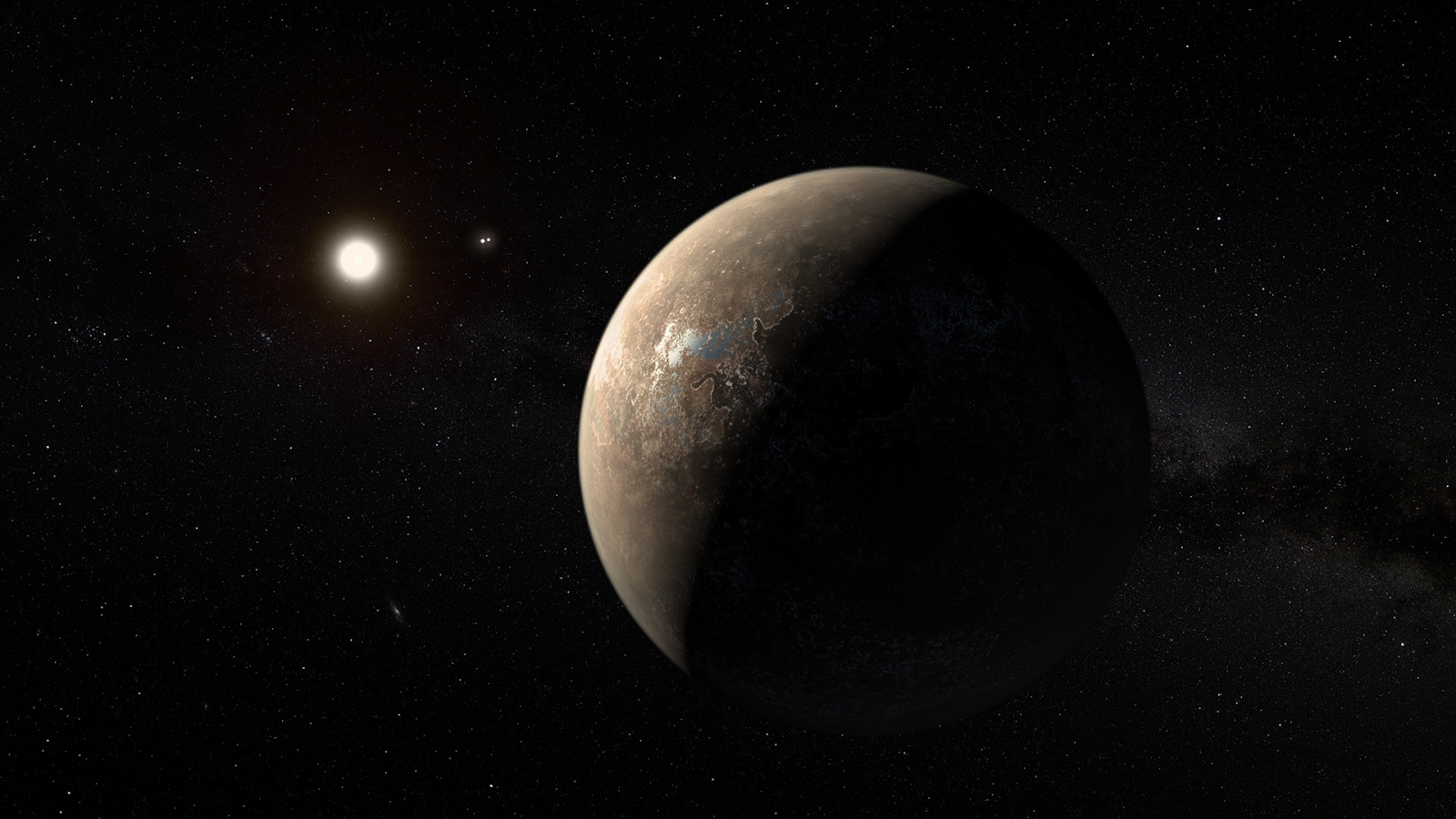HABITABLE EXOPLANETS:
Before diving into the habitable worlds like the Earth, first let us understand what an Exoplanet is in short- An Exoplanet is a planet that exists outside of our solar system. Almost Every star has its own planets. We are also living on a Planet - Earth.
1. Proxima-b :
Now, we all know, the nearest star to us other than the Sun is none other than the Proxima Centauri lying in the constellation - Centaurus. Proxima Centauri is a Red Dwarf Star. Proxima-b is one of the discovered planets orbiting its star, what's special is that it lies in the habitable zone. The orbital period of the planet is 11 Earth Days.
It has a mass very similar to Earth. Scientists also believe that there is a high probability for liquid water to exist on the planet. And also, there might be a rocky terrain on the planet. It is 4.24 light years away from us. If we can somehow develop a technology to travel quick enough to match the speed of light, it might not take long to reach the planet.
2. Trappist-1-e :
Source: Wikipedia
TRAPPIST-1 unlike the Sun, is a Red Dwarf Star approximately 40.7 light years away from us. It lies in the constellation - Aquarius. This star has a total of 7 planets orbiting it. Surprisingly, 3 out of these 7 planets lie in the habitable zone - Trappist1-e, Trappist1-f, Trappist1-g. Though all 3 planets are in the habitable zone of their star, Trappist1-e is the planet most likely to have life. The mass, radius, density, gravity, and many other factors are similar to that of our tiny blue planet Earth. The orbital period of the planet is 6.1 Earth Days. Trappist1-e is one of the most potentially habitable exoplanets discovered.
3. TOI 700-d :
Source: Wikipedia
TOI 700 is a Red Dwarf Star lying the constellation - Dorado. It is approximately 101.4 light years away from the Earth. TOI 700 is a host to one of the first earth sized exoplanets lying in the habitable zone of their stars - TOI 700-d. It is also proposed to have an ocean, and a rocky terrain. The orbital period of this planet is 37.4 Earth days.
There are millions of such habitable planets in the universe. We just need to technology to travel to them in time. These were 3 of the exoplanets most likely to have life. There are many other such planets as well. To know more about them keep checking out blog. Kindly Consider following the blog.
-by Akshit Kumar Sutrakar
Sources: Wikipedia, Nasa



